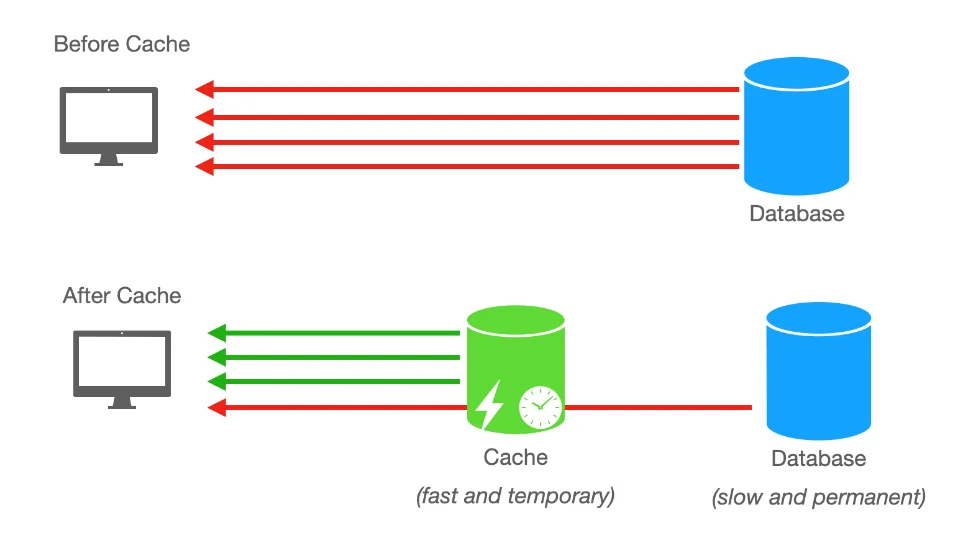
Table of Contents
Modern systems, especially those built using microservices architecture, prioritize performance and scalability. One of the most effective strategies to achieve both is caching. In this blog, we’ll explore Redis Caching in Spring Boot Microservices, understand its importance, see how Redis plays a key role, and learn how to implement it efficiently. If you’re aiming to improve performance, Spring Boot Redis Integration is a powerful approach worth adopting.
What Is Caching and Why It Matters
Caching stores frequently accessed data in memory, reducing the need to query a database or call an external API each time. By returning results from a faster in-memory store, applications improve their performance and responsiveness through techniques like Spring Boot Redis Integration.
Why Caching Is Essential for Microservices
- Faster performance: Fetches data in milliseconds instead of waiting on slower DB calls.
- Reduced backend load: Handles repeated queries from memory rather than hitting the server.
- Cost savings: Lowers cloud consumption and infrastructure costs.
- Better scalability: Delivers high throughput with low response times.
Spring Boot Redis Integration Basics
Redis (Remote Dictionary Server) is an open-source, in-memory data store. Developers use Redis as a cache, message broker, and even a lightweight NoSQL database. In microservices, Spring Boot Redis Integration enables centralized, fast, and scalable data access.
Why Use Redis for Microservices Caching
- Extremely fast due to in-memory architecture.
- Supports strings, hashes, lists, sets, and more.
- Simple syntax with wide language support.
- Provides high availability and persistence.
- Comes with built-in tools like TTL and pub/sub.
Key Redis Features for Caching
- Uses key-value pairs stored in memory.
- Offers RDB and AOF for persistence.
- Includes TTL to auto-expire cache entries.
How Redis Works Internally
Redis processes multiple client requests using a single-threaded event loop. It uses I/O multiplexing to handle many connections efficiently, ensuring high performance with minimal overhead. This is why Spring Boot Redis Integration has become a go-to pattern for developers looking to improve throughput.
Key Internal Concepts of Redis
- Persistence via snapshots and logs.
- Eviction using LRU (Least Recently Used).
- Fork-based persistence for durability.
- Highly optimized data structures.
Cache Hit, Miss, Evict, and Invalidation in Redis
- Cache Hit: Redis returns data from memory.
- Cache Miss: Application fetches from DB and saves it in Redis.
- Cache Eviction: Application or Redis removes data due to TTL or size limits.
- Cache Invalidation: App deletes or updates outdated cache entries.
Popular Caching Strategies in Microservices
- Write-through: Writes to both cache and database.
- Write-behind: Writes to cache first, database update is delayed.
- Cache-aside: App loads from DB if cache misses, and stores it.
- Time-based: Entries auto-expire after TTL.
Redis Commands for Caching
SET key value– Add data to cache.GET key– Retrieve cached data.DEL key– Remove an entry.EXPIRE key seconds– Set expiration time.TTL key– Get remaining TTL.FLUSHALL– Clear all data.INCR key– Increase a numeric value.HSET key field value– Store fields in hashes.HGET key field– Retrieve from a hash.
Spring Boot Redis Integration in Microservices
Distributed Caching Challenges
Each service usually has its own local cache. In distributed environments, this causes data inconsistency. Redis helps solve this by acting as a centralized cache shared by all microservices. This is where Spring Boot Redis Integration really shines.
Benefits of Using Redis
- Reduces repeated DB access across services.
- Ensures centralized cache management.
- Enables shared state and synchronized updates.
Steps to Set Up Redis Caching
- Dependency:
<dependency> <groupId>org.springframework.boot</groupId> <artifactId>spring-boot-starter-data-redis</artifactId> </dependency>
- Configure
application.yml:spring: redis: host: localhost port: 6379 timeout: 60000 lettuce: pool: max-active: 8 max-idle: 8 min-idle: 0 - Enable Caching:
@SpringBootApplication @EnableCaching public class MyApplication { public static void main(String[] args) { SpringApplication.run(MyApplication.class, args); } } - Use Cache in Service Layer:
@Service public class ProductService { @Cacheable(key = "#id", value = "productCache") public Product getProductById(String id) { return productRepository.findById(id).orElse(null); } @CacheEvict(key = "#id", value = "productCache") public void deleteProduct(String id) { productRepository.deleteById(id); } }
Advanced Redis Use Cases
Redis Data Structures for Integration
- Strings: Store text, JSON, or objects.
- Lists: Perfect for queues or logs.
- Sets: Great for tags and unique items.
- Sorted Sets: Useful for leaderboards.
- Hashes: Store structured objects.
- Bitmaps: Track binary states efficiently.
- HyperLogLog: Approximate unique counts.
- Streams: Handle real-time events.
- Pub/Sub: Manage messaging systems.
- Geo: Store location-based data.
- Lua: Execute atomic scripts on server side.
- Modules: Use RedisJSON, RedisAI, and more.
- Redis Cluster: Scale horizontally.
- Redis Sentinel: Ensure high availability.
Redis Queue with Lists Example
@Autowired
private StringRedisTemplate redisTemplate;
public void addToQueue(String task) {
redisTemplate.opsForList().leftPush("taskQueue", task);
}
public String fetchFromQueue() {
return redisTemplate.opsForList().rightPop("taskQueue");
}
Conclusion
Redis Caching in Spring Boot Microservices brings speed, flexibility, and resilience. It helps teams build scalable apps that deliver fast, consistent responses. With Spring Boot Redis Integration, you go beyond basic caching to leverage advanced Redis features, enabling high-performance microservices architecture.

